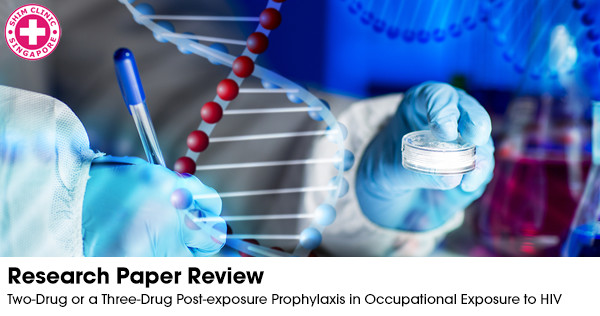Among occupations, Medical professionals are the ones who are most highly exposed to infections and threats of communicable diseases. Human Immunodeficiency Virus (HIV), being an untreatable virus, holds great risk to medical professionals especially those who work with HIV-infected patients and needles. HIV Post-Exposure Prophylaxis (PEP) is something that can greatly reduce the risk of infection during the course of their work. A review article published in a medical scientific journal, “Clinical Infectious Diseases” in 2004 gathered the published data to correlate the efficacy and toxicity of two drug and three-drug PEP regimen for occupational exposure to HIV.
Most of the available literature is on animal models as there are ethical limitations for clinical trials on humans. In a nutshell, these trials show an earlier start and a 4-week use of PEP is the most effective. Only one case-control study, reported and published in 1994, was conducted on health care professionals which showed that the use of a single antiretroviral drug (zidovudine) decreases the risk of HIV transmission to 79%. It also showed that only 33 out of 698 professionals, receiving monotherapy PEP became seropositive. After this study, the Center for Disease Control and Prevention (CDC) developed empirical PEP treatment guidelines for occupational HIV exposure.
These guidelines suggest the use of at least two drugs for PEP. According to the review there is more usage of a three-drug therapy in both the USA and Europe despite more side effects than a two-drug therapy which unfortunately leads to lesser compliance and early discontinuation usually resulting in PEP failure. However, HIV infected patients show better compliance to therapy with three-drug as compared to people receiving PEP for prevention.
For minor pricks and exposure to aberrations, CDC recommends the use of only a 2-drug regimen of PEP. The aim is to prevent virus from developing the infection in the body which can be achieved by a 2 drug therapy for at least 28 days. For more deep exposure like penetrating wounds, a three-drug therapy is recommended. Interestingly, one study showed that those on a three-drug PEP therapy had more side effects than HIV-infected patients on a three-drug treatment as well as an 8-times higher rate of discontinuation.
The review showed that the efficacy of the three-drug PEP was better than the two-drug PEP, but overall adherence to the treatment was better with two-drug PEP therapy. As mentioned previously, the toxicity was found to be higher with three-drug PEP. Although there is data on the frequency and percentage of the antiretroviral drug resistance, there is almost no data on the extent of drug resistance to the different types on PEP.
Based on the available data, the authors of the publication made a model for the PEP which showed that without HIV PEP, 300 out of 100,000 HIV-exposed health care professionals will become seropositive. This transmission will come down to 108/100,000 with three-drug PEP therapy. A two-drug PEP will result in transmission to only 105, which are only 3 cases less than the three-drug PEP.
The two-drug PEP, as a whole, has better outcome and lesser toxicity than the three-drug PEP. Therefore, with lower antiretroviral resistance a two-drug PEP is recommended by the review.
Source:
Bassett I V et al Two Drugs or Three? Balancing Efficacy, Toxicity, and Resistance in Postexposure Prophylaxis for Occupational Exposure to HIV. Clinical Infectious Diseases, 2004.

